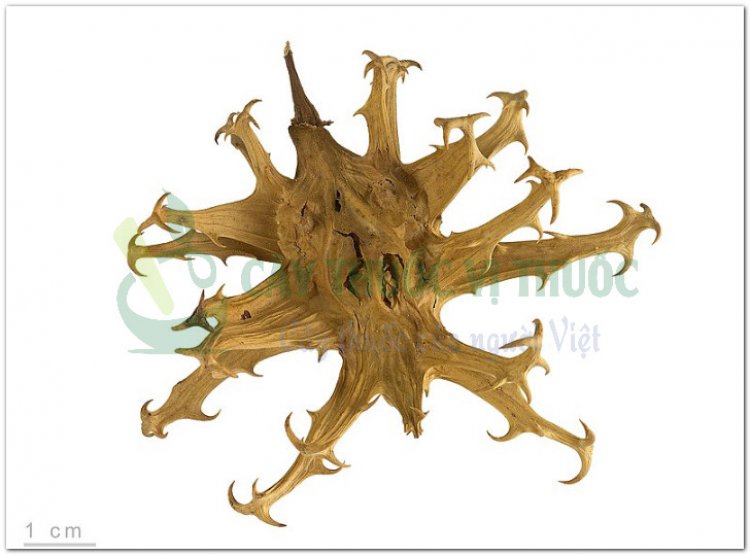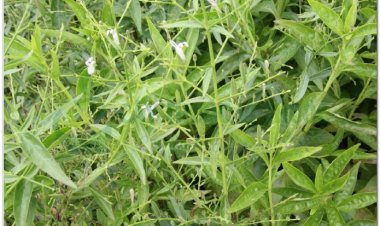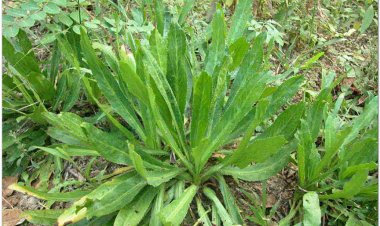Cây Móng Quỷ (Harpagophytum procumbens)
Cây Móng Quỷ được người dân Nam Phi sử dụng như một bài thuốc giảm đau thần kì trong điều trị bệnh xương khớp. Ở Đức, có đến 60% sản phẩm hỗ trợ điều trị bệnh xương khớp có chứa chiết xuất Móng Quỷ. cúng Cây thuốc vị thuốc đi tìm hiểu sự thật về thảo dược Móng quỷ này nhé.

Harpagophytum procumbens chủ yếu được tìm thấy ở các vùng phía đông và đông nam của Namibia , Nam Botswana và vùng Kalahari của Northern Cape , Nam Phi. H. zeyheri được tìm thấy ở các phần phía bắc của Namibia ( Ovamboland ) và phía nam Angola.
Cây móng Quỷ là một loại thảo dược phát triển mạnh ở điều kiện khô cằn, có tên khoa học là Harpagophytum procumbens, thuộc họ vừng (Pedaliaceae) hay còn gọi là Devil’s claw, có nguồn gốc từ Nam Phi.
Thành phần chính của cây Móng Quỷ là Harpagoside, harpagide, và Procumbie, đường, triterpenoids, acid thơm,… và kaempfero. Harpagosides được tìm thấy nhiều nhất trong củ của cây và là thành phần được ứng dụng nhiều nhất trong y học.
Các thông tin thực tế về nghiên cứu cây móng quý hiện chỉ đang ở giai đoạn thử nghiệm cơ bản ban đầu chưa có nghiên cứu lâm sàn trên người cụ thể bởi vậy khi mua các sản phẩm về xương khớp từ cây móng quý bạn cần lưu ý
The Role of Chondroprotectants, Nutraceuticals, and Nutrition in Rehabilitation
D.M. Raditic, J.W. Bartges, in Canine Rehabilitation and Physical Therapy (Second Edition), 2014
- Devil's Claw
Harpagophytum procumbens (devil's claw) has been used as an analgesic, a remedy for fever and allergies.244 The major chemical constituents of Harpagophytum are iridoid glycosides, phytosterols, aromatic acids, and flavonoids. Glycosides found in the tubers of the plant appear to be the most therapeutically important constituents. Whole-plant extracts appear to have a better therapeutic effect than those prepared from isolated parts.244 A review of clinical trials using H. procumbens preparations for treatment of joint and lower back pain found that using extracts containing 50 to 60 mg harpagoside daily gave more reliable results and were more effective at alleviating pain and improving mobility than extracts with lower amounts.245,246 An in vitro study using two rat cell lines found that the glycosides inhibited lipopolysaccharide-induced inducible nitric oxide and cyclooxygenase-2 expression via nuclear factor κB suppression, thereby inhibiting inflammation.247 Devil's claw is chondroprotective, possibly because of inhibition of inflammatory mediators, including cyclooxygenase-2, leukotrienes, nitric oxide, tumor necrosis factor-α, and interleukin-1β, and by inhibiting matrix metalloproteinases and elastase.247,248 (Note that devil's claw may increase gastric acidity; therefore caution is recommended when using this compound with NSAIDs or corticosteroids.)
Specialized dietary supplements
Carey A. Williams, in Equine Applied and Clinical Nutrition, 2013
- Potential rationale for use
Devil's claw (Harpagophytum procumbens) is reported to have an anti-inflammatory effect in humans and laboratory animals. The active ingredients are various iridoid glycosides, acetylated phenolic glycosides, and terpenoids. Devil's Claw is primarily marketed for its painkilling and anti–inflammatory properties, and has many testimonials claiming relief from rheumatism and other joint disorders (Brien et al 2006). Some human clinical studies report a decrease in pain intensity and an increase in flexibility after supplementation with Devil's Claw extract. There is therefore potential cross over to the equine market.
Topical application of devil's claw decreased the expression of cyclooxygenase (COX)–2 in mouse skin (Kundu et al 2005). Harpagoside, a glycoside component of Devil's Claw, has been shown to suppress COX–2 and inducible nitric oxide synthase (iNOS) at both the mRNA and protein level in vitro (Huang et al 2006). Its effectiveness in reducing pain and inflammation associated with rheumatoid and osteoarthritis can be explained by its ability to block the production of inflammatory mediators like prostaglandin E2 (PGE2; Chantre et al 2000). A chondroprotective effect of Devil's Claw in rabbits was attributed to an increase in matrix metalloproteinase–2 (Chrubasik et al 2006).


































































































































































































































































































